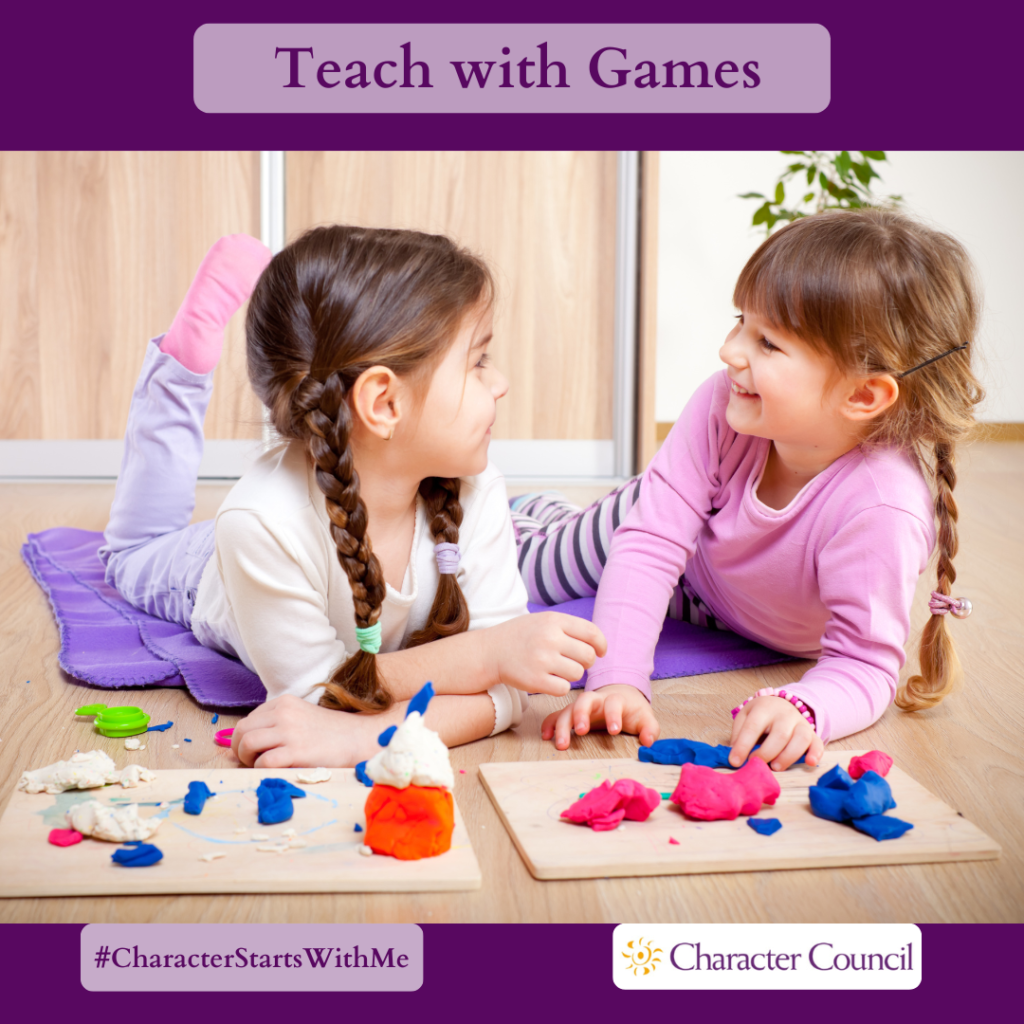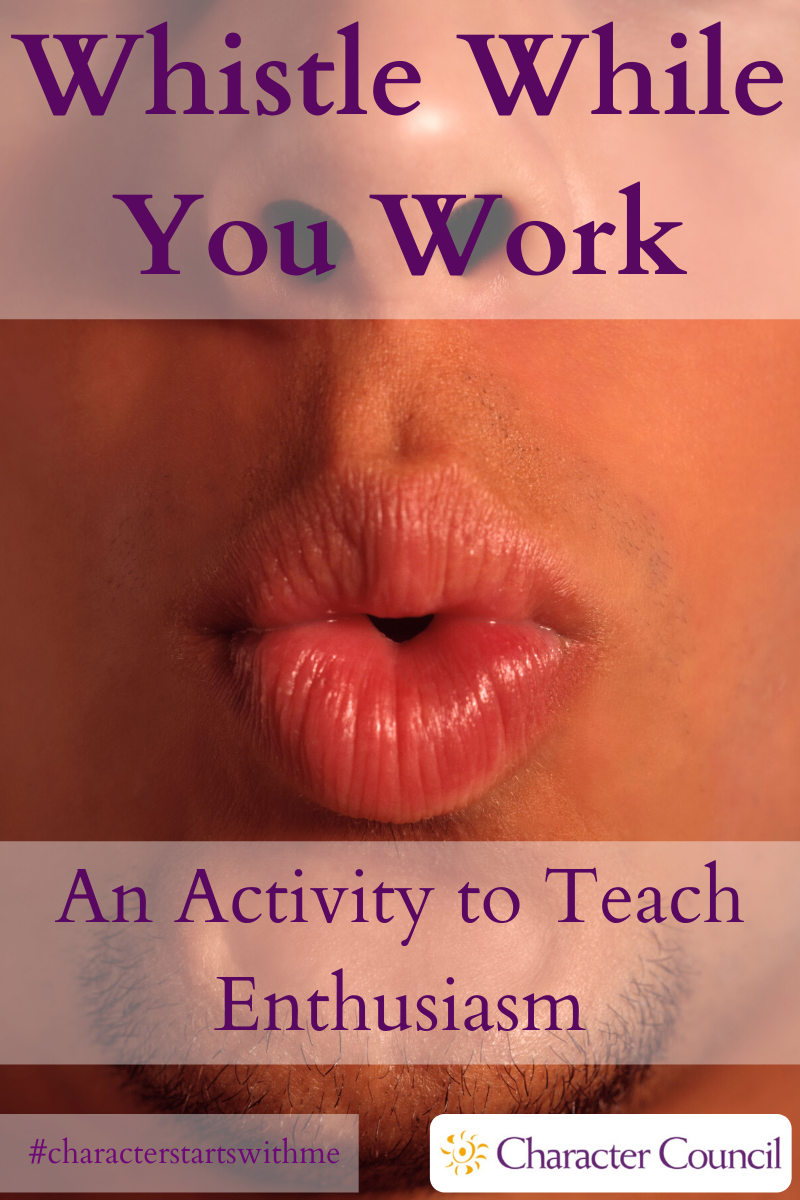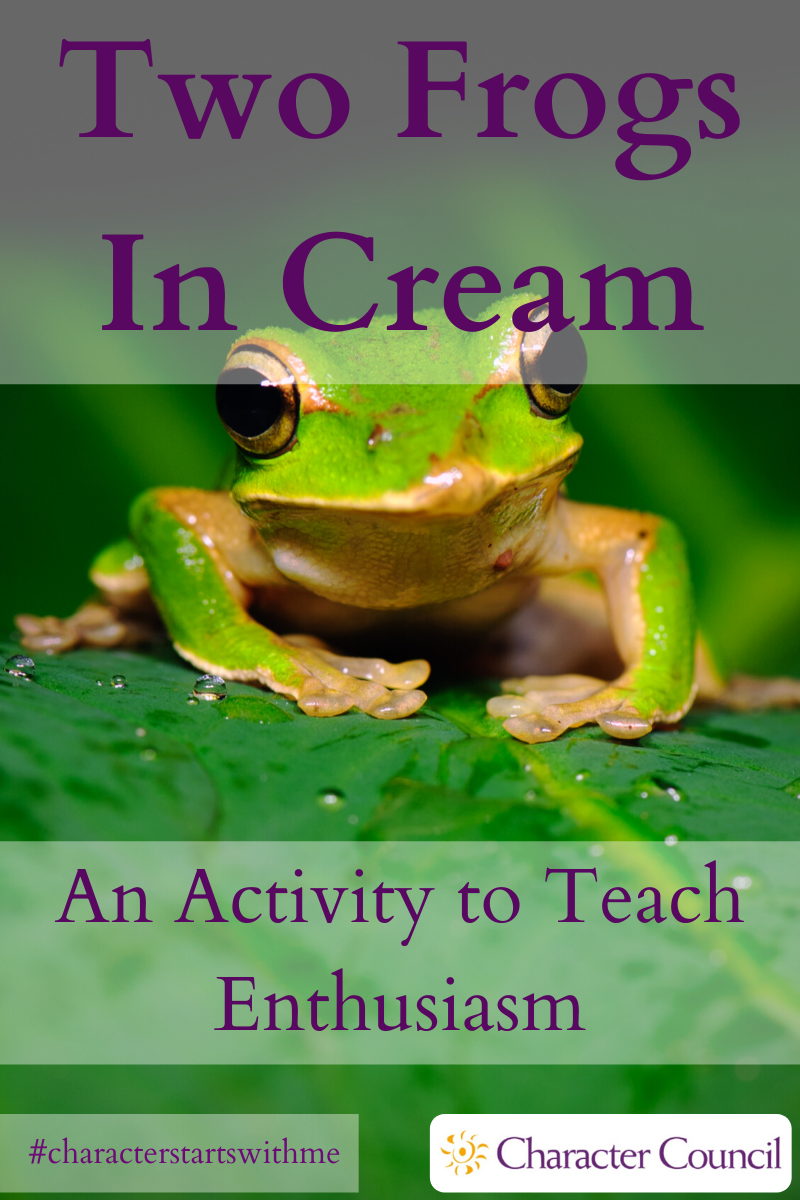
Enthusiasm Activities
The activities here are fun ways to teach character. The game aspect makes the lesson more memorable. Each activity has processing questions at the end. Without processing the activity, the exercise is just a game. To make it a stronger lesson when you process it, relate the character quality to a core value that your organization promotes.
Consider picking a student to run the activity. You will need to give them time ahead of the activity to prepare. Another option is to pick a few students to run the activity for a younger classroom after you have run it for your class. Encourage your students to repeat it in the home for younger siblings or even parents.


What Floats Your Boat?
Start this activity with a discussion of the meaning of this phrase. It can refer to what makes you excited or what you find easy to be enthusiastic about. Give an example of something that you are enthusiastic about. Now divide the class into small groups and have them share something that they are enthusiastic about. While they are talking draw a simple line drawing of a boat at the top of the chalkboard/whiteboard. When the groups are done sharing ask for some examples from the groups and write these down on the board under the boat. You will find that the answers will cluster depending on the age of the students. When you have a good number of items listed ask for some suggestions from the group at large for items that are hard to be enthusiastic about but that you still have to do anyway. What are some ways you can make these things more enjoyable or less of a drag? Can you reward yourself with something you like when you finish a chore? Can you gamify it in some way – turn it into a contest with a sibling or time yourself and see if you can beat your best time? Give the students some time to think about something that falls into this category and encourage them to each choose something they can do to help bring their enthusiasm to the chore. Set a time in the future when they will share if it worked for them or not.
To process this activity, ask these or similar questions:
- Is it fun to think about the things that you get excited about?
- Can we go through life only doing the fun things? Why not?
- Can we bring our enthusiasm to all the things that we do?
- Have you ever wasted time putting off a task and then when you did it, it wasn’t that bad or it took less time than the time you spent complaining?

Whistle While You Work
This activity can be paired with the “What floats your Boat” activity. If you don’t then start this activity by having the students list chores that they do not like to do such as cleaning the toilet or taking out the garbage. After you have several tasks listed, discuss how the slaves (or the 7 Dwarfs for younger students) would sing while they worked to make the task seem lighter. Challenge them to take a simple known song and change the words to fit the task. Give an example in class such as “Mary had a toilet brush, toilet brush, toilet brush. Mary had a toilet brush that made the toilet all clean”. Divide the class into small groups and assign each of them a task that is typical to their age group. They are to write a “ditty’ of their own about it to the tune of Mary Had a Little Lamb. They only need to do one verse. When they are done, have each group sing their ditty for the class.
To process this activity, ask these or similar questions:
- Does it seem strange to sing a song about a task?
- Did making up something silly make the task not seem so bad?
- Will you remember these little songs when you have an undesirable task to do?

Two Frogs In Cream
Two frogs fell into a can of cream,
Or so I’ve’ heard it told:
The sides of the can were shiny and steep,
The cream was deep and cold.
“O, what’s the use?” croaked Number 1.
“Tis fate; no help’s around.
Good-bye, my friends Good-bye, sad world”
And weeping still, he drowned.
But Number 2, of sterner stuff,
Dog-paddled in surprise,
The while he wiped his creamy face
And dried his creamy eyes.
“I’ll swim awhile, at least,” he said-
Or so I’ve heard he said:
“It really wouldn’t help the world
If one more frog were dead.”
An hour or two he kicked and swam,
Not once he stopped to mutter.
But kicked and kicked and swam and kicked.
Then hopped out, via butter!
Author Unknown
Use this poem to illustrate the need for positive thinking. There are many versions of the poem/story on YouTube and other websites that you can use. After reading it, you can demonstrate the making of butter. Label a mason jar or old mayo jar Enthusiasm and fill it half-full of room temperature heavy whipping cream. You can make this go faster by adding a marble or culturing the cream first by adding a few teaspoons of cultured yogurt or sour cream. Pass the jar around and let each student shake it. It will take anywhere from 10 – 30 minutes to form butter. Don’t stop when it looks like whip cream. The butter will form and separate from the buttermilk that remains, if any. Drain the buttermilk off, stir in a pinch of salt and enjoy on crackers. You will make half as much butter as the cream with which you started. It should taste delicious, slightly sour, with no aftertaste. If it is bubbly, or smells yeasty or gassy, discard. You may need more than 1 jar depending on your class size.
For a website that is kid-friendly science on butter making go to:
https://littlebinsforlittlehands.com/make-homemade-butter-thanksgiving-edible-science/
To process this activity, ask these or similar questions:
- Did you like the story of the frogs?
- Did you think we could make butter from the whipping cream?
- Did you like the taste of the butter?
- Will you remember the frogs and butter the next time you get discouraged and lose enthusiasm?